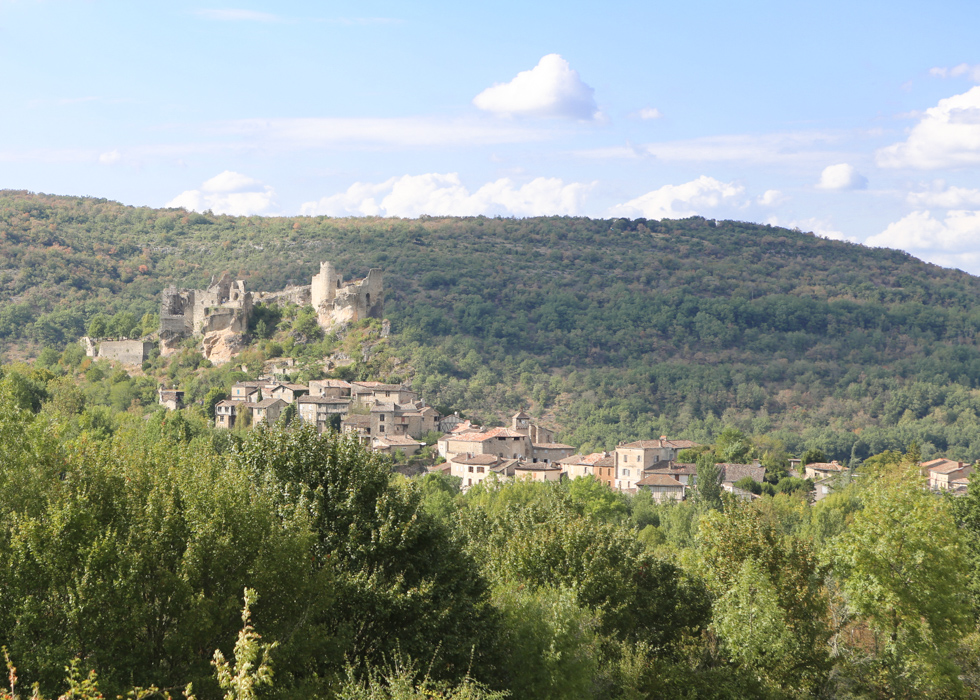
.jpg)
In this article, we introduce some of the most scenic villages of rural Tarn: Cordes sur Ciel, Penne, Puycelsi, and Bruniquel
.jpg)
Tarn is a southern France “department” (administrative divisions of France) named after the Tarn river (most of the French département names come from the river crossing them). Tarn is still nowadays a very rural place, the main city Albi having only 50 thousand inhabitants. The region is mainly hilly, with limestone and sandstone foot-hills clothed with vines and fruit trees: Tarn wine (Gaillac wine), meat, fruits, and vegetables are quite renowned in France.
.jpg)
This lush, verdant region is steeped in French traditions and shaped by a long history: while visiting Tarn you will have many occasions to step back in time and uncover the secrets of the region’s past. The natural heritage sites of Tarn are some of the most scenic places in France. That’s already many good reasons to discover the region! but today’s let focus on the beautiful medieval towns of Tarn.
The concentration of so many medieval towns in the area is not a coincidence. Most of them were constructed and fortified in the late 12th / early 13th century. At that time a major conflict was taking place in the area.
.jpg)
You must have heard about the crusades that took place in the Middle East. But in the year 1209, a crusade was launched by the Pope against the Cathars, a Christian religious movement that rejected the Catholic priesthood and developed different beliefs from the Catholic church. The Cathars were accepted and protected in Occitania (actual Southern France) especially by the King of Toulouse. Apart from the religious conflict, it was also a pretext from the Kingdoms of Northern France to invade the rich and independent Occitan territories.
.jpg)
Albi was known as a hotbed of Catharism, and the bloody campaign against the Cathars was ultimately known as the Albigensian Crusade. Many villages in Tarn were fortified to protect the population from the crusaders. When the Southern kingdom was finally defeated, the villages were used by the invaders to control the nearby territories.
.jpg)
Many villages were quite flourishing until the 18th century, but from the 19th century onwards the rural exodus started, that's why these villages' buildings did not change much and historical buildings are so well preserved.
Cordes Sur Ciel is located on top of a hill, and on cloudy days the town seems at the top of the clouds that are in the valley: that’s why it is called “sur Ciel” (above the sky).
.jpg)
The charming town is accessible by walk (the car parks are in the lower city). However, if you don’t want to climb you can take a touristic little train as a shuttle (3€ ) or commented tour shuttle with audioguides (40 minutes, 6,5€)
.jpg)
Cordes was founded in the 13th century by count Raymond VII of Toulouse to protect the region against the crusaders. After the war, the village became a trade center, and many rich merchants built impressive Gothic palaces that you can still see nowadays. While you stroll around the cobblestone road of the village you can easily imagine yourself in the Middle Ages.
.jpg)
Near the old city gate, the villages offer a beautiful view of the countryside stretching as far as the eye can see. Since the village is very touristic, you can find there many restaurants and shops: most of the shops sell local handmade handicrafts so it can be a good opportunity for you to find original souvenirs.
Perched on the banks of the Aveyron river, Penne is a very picturesque medieval town.

During the Albigensian Crusade, the village was a refuge for the Cathars in the region. As a consequence, the castle was targeted by the Crusaders, but they couldn’t conquer it.
.jpg)
You can explore the village by following the steep cobbled paths that lead to the ruins of the Castle.
.jpg)
During summer, there are Historical reenactments organized in the castle, such as knight fights. Moreover, the castle is restored by a team of experts that only use medieval construction techniques, tools, and costumes
.jpg)
Bruniquel Is famous among French people because some movies were shot there (the most famous one is “The old Gun” a movie about WWII directed by Robert Enrico). Bruniquel is planted on a rocky outcrop, two feudal medieval castles dominate the village. On the castle dates back from the 12th century, the other from the 15th. You enter the village through medieval gateways in the defensive wall. Most of the old stone houses are from the 16th century, and many streets of the village have not changed for centuries.
.jpg)
The village of Puycelsi is perched on top of a promontory overlooking a huge forest, that’s why it is also known as “the fortress in the woods”. Because of the strategic importance of the site, it became a fortress from the XIIth century onwards. During the Cathar Crusade, the citadel successfully resisted several attacks from the crusaders. Almost abandoned in the 1950s, it has since been restored by its inhabitants and is now a touristic spot.
.jpg)
Frankly speaking, visiting these villages without a car is quite difficult, as there are not many public transportations. From Albi bus station you can take line 707 to Cordes sur Ciel (One bus every hour during summertime). During the summer, there are also buses on the weekends departing from Montauban railway station to Bruniquel, Penne, and Cordes (line 107-30). There are also bus tours organized by Toulouse Tourism Office, to visit Albi and Cordes sur Ciel (on Tuesday, Thursday, and Saturdays between March and November). If you have the chance to rent a car, it will much more easy to explore all the villages in one day and to be free to go wherever you want.
Author and Photographs - Vincent Sacau